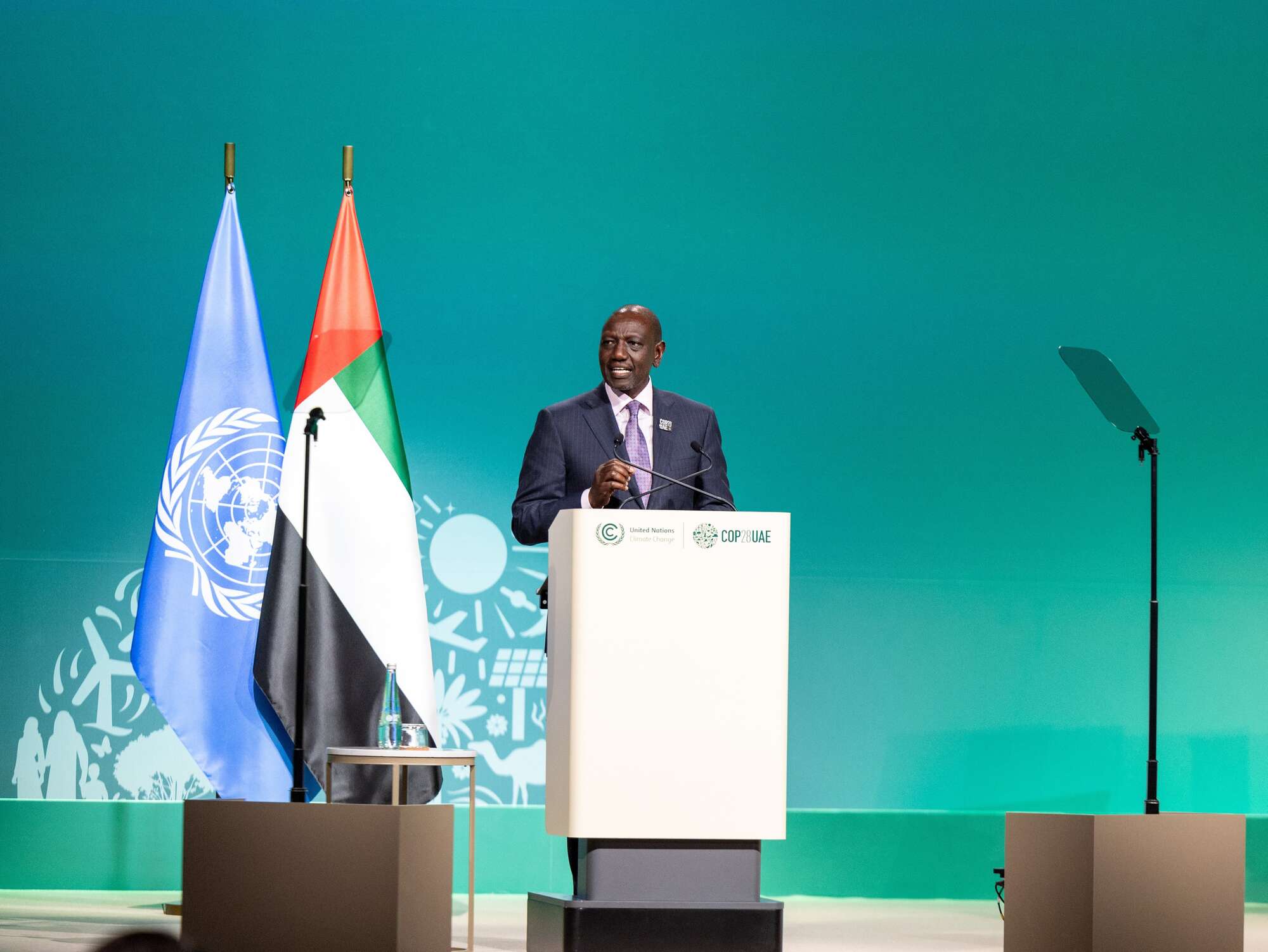“She’s not very big,” my fellow sightseers remark. “Yeah, it’s pretty shit,” another says.
Yet if you want to make a protest in Copenhagen, this is still the place to do it.
2020: The Little Mermaid statue with “Free Hong Kong” sprayed on the rock she sits on.Credit: Ritzau Scanpix
After the Danish national men’s football team qualified for the last World Cup in Qatar, the sculpture was targeted by human rights protesters. As Danish fans woke up to a hungover, the sculpture wore a Denmark hat with a sign reading: “15,000 dead in Qatar, hooray for the World Cup”.
That was one in a long line of protests, which have included two decapitations, anti-whaling messages, pro-vegan campaigns and political protests over Iraq, Hong Kong and Ukraine, among others.
In the 1970s, the mermaid once held a banner that read: “Yes, and then women got equal pay. Look – it was a real adventure”.
In 1998, when she lost her head – 34 years after it was first hacked off – the crime was viewed so serious that the Copenhagen homicide squad was asked to investigate. In 2003, the mermaid was again seriously injured when unknown assailants blew her away from her usual place on the stone.

Police technicians examine the damage to the statue in 2003.Credit: AP
During the peak of the debate over Turkey joining the European Union, she was covered in a niqab – a Muslim garment for women – and graffitied.
English writer Monica Redlich wrote about The Little Mermaid in her 1939 portrait of life in Copenhagen before the war, Danish Delight, and revealed that the statue had become one of the most important tourist attractions in the city. But she determined that tourists’ interest was hardly linked to any deep knowledge of Andersen’s original fairytales.
“It is most surprising how this inconspicuous sculpture, which represents a story of unrequited love, can become the national icon of such an unromantic, smooth and practical people as the Danish!” Redlich wrote.
The mermaid is hugely popular with Chinese tourists, who visited in their thousands before COVID-19. Surprisingly, Andersen was one of Mao Zedong’s favourite writers. Andersen’s book today remains a regular in the curriculum for all Chinese school students.

Police stand by the statue after another attack by vandals in 2020.Credit: AP
“For some, the sculpture is the embodiment of a traditional Danish identity. For others, it is at the service of the experience economy as one of the world’s strong commercial brands,” says Mikael Frausing, from the Danish Centre for Urban History.
“For others, the sculpture as a global icon can be used as an international poster pillar for political messages, such as the messages ‘Free Hong Kong’ and ‘Racist fish’, which were painted on the sculpture in 2020.”
Freja says she thinks that after the mermaid went Hollywood, her native Denmark never really felt the same about her.
Loading
In the Disney movie, Ariel marries Eric and the two live happily ever after. In Andersen’s fairytale, the Little Mermaid takes the knife and agrees to kill the prince. But when she tries to do it, she finds that she can’t kill him, and instead, she sacrifices herself to save his life, and turns into sea foam.
“I think because people now think it’s a happy story they want to see her, but the film is different to the fairytale we grew up with here. That’s a bit sadder,” Freja says. “But people will always keep coming, so I guess it keeps me in a job!”
Get a note directly from our foreign correspondents on what’s making headlines around the world. Sign up for the weekly What in the World newsletter here.
#worlds #overrated #tourist #attraction







